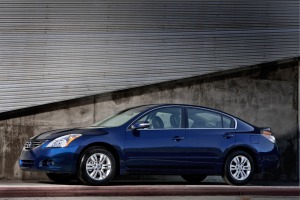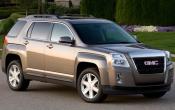Car Financing in a Recovering Economy
Effortless for Prime Borrowers, Getting Easier for Subprimes

After three years of tight credit and high interest rates, things are starting to look up for consumers who want to finance their car purchases. Credit restrictions are easing and interest rates have dropped. Even people with imperfect credit scores can find financing for their car purchases, auto financing experts say. As always, however, credit history does control the amount buyers can finance and the interest rates they'll pay.
"There definitely is a changed marketplace," says Melinda Zabritski, director of automotive credit for Experian. "We're seeing a year-over-year increase in the percentage of loans that are booked in the subprime space."
Consumers themselves may be responsible for the improving picture. They now plan for their car purchases, rather than making impulse buys, as was common a few years ago, Zabritski says.
Ally Financial, formerly known as GMAC, has seen new-car contracts nearly double in the first nine months of 2010, compared to a year ago. That's a clear indicator that things are moving in the right direction, says Ally spokesman Tony Sapienza.
But Mike Andra, director of pricing and credit risk analysis for Santander, sees the situation from the subprime end of the spectrum, where Santander makes its loans. "Many lenders haven't really loosened up on their policies and risk tolerances," Andra says.
There's no question, though, that interest rates have fallen across the board since the depth of the credit crunch, partly because of a general loosening of credit and partly because many automakers are subsidizing rates in the form of incentives to spur sales. In November 2008, for instance, a buyer with excellent credit and a 60-month loan from a bank was paying an annual percentage rate of 6.54 percent. This same loan in December 2010 was 4.35 percent.
The chart below gathers other national averages for new-car loans as of December 1, 2010. These rates are only estimates, and actual rates will vary depending on individual characteristics of the borrower's finances and credit history.
| New Auto Loan Rates | ||
| Tier 1 (720+) | ||
| Bank Rates | Credit Union Rates | |
| 36 months | 4.28% | 4.08% |
| 48 months | 4.29% | 4.18% |
| 60 months | 4.35% | 4.28% |
| Typical down payment required | 0% | 0% |
| Tier 2 (700-719) | ||
| Bank Rates | Credit Union Rates | |
| 36 months | 5.17% | 4.55% |
| 48 months | 5.18% | 4.65% |
| 60 months | 5.24% | 4.75% |
| Typical down payment required | 0% | 0% |
| Tier 3 (670-699) | ||
| Bank Rates | Credit Union Rates | |
| 36 months | 6.39% | 5.59% |
| 48 months | 6.39% | 5.69% |
| 60 months | 6.46% | 5.77% |
| Typical down payment required | 0% | 0% |
| Tier 4 (630-669) | ||
| Bank Rates | Credit Union Rates | |
| 36 months | 8.38% | 7.50% |
| 48 months | 8.40% | 7.58% |
| 60 months | 8.45% | 7.68% |
| Typical down payment required | 0% | 0% |
| Footnotes | ||
| Bank rates are the average new auto loan rates of more than 900 lending institutions as of December 1, 2010. | ||
| Credit Union rates are the average new auto loan rates of several prominent credit unions as of December 1, 2010. | ||
| Note: These rates are estimates, and actual rates will vary. In addition, factors such as employment stability, household income, explainable credit troubles (i.e. bankruptcy due to medical bills) and an unusually high down payment can make a significant difference in lenders' loan decisions and the rates they charge. | ||
| Source: Informa Research Services, Inc., Calabasas, California | ||
The "Primes" Are on Cruise Control
According to Experian data from the third quarter of 2010, it's smooth sailing for prime borrowers (those with a credit score of 680-739) or "super prime" borrowers (with a credit score of 740 and higher).
"These are consumers that can pretty much get financing anywhere," Zabritski says. There's a lot of competition for super prime consumers because they pose so little risk of defaulting on their financial obligations, she says.
Super prime and prime borrowers are the people who tend to qualify for the heavily advertised low promotional APR rates. Automakers prefer these incentives to bonus cash rebates. They know not everyone will qualify and the risk associated with lending to prime customers is much lower.
It's a different story for subprime borrowers, Santander's Andra says. Subprime borrowers (those with credit scores of 619 and below) have to come in with at least a 20 percent down payment, he says. "If you want to purchase a car that costs $15,000, you've got to come up with $3,000 in cold hard cash."
Subprime borrowers must also be prepared to prove their stated income with a pay stub, Andra says. He adds that the lender may call a person's workplace to verify employment. Fewer people might be bad credit risks these days, but lenders aren't taking any chances.
Credit May Be Easier With Used Cars
Experian's Zabritski says buyers with credit challenges might find better loan opportunities in the used-vehicle market. Although Experian's data shows that interest rates are higher there, the average credit score for a used-car customer (683) is significantly lower than that of a new-car customer (769). In other words, a buyer might have to deal with a higher interest rate, but the price of the car will be lower and there is a greater chance of being approved for the loan.
Leasing is also easier to negotiate today, according to Ally's Sapienza. A couple of years ago, many of the domestic automakers cut back on leasing because the residual values of their cars were too low.
Ally has since stepped up its funding of GM and Chrysler leases. Sapienza pointed out that Ally has seen about an $800-million increase in leasing from the fourth quarter of 2009 to the third quarter of 2010.
Edmunds internal data shows a 5 percent increase in overall leasing from 2008. More automakers are offering leases and are willing to subsidize lease deals with lower monthly payments for qualified customers.
Credit Tips for Consumers
Whatever their credit scores, car shoppers should brush up on borrowing basics before they visit dealerships.
1. Set a budget: A good benchmark is that a monthly car payment shouldn't exceed 18 percent of monthly take-home pay. Within that 18 percent, borrowers should be sure to include the cost of the vehicle, fuel costs and insurance costs. This Edmunds affordability calculator can make the estimate easier. If a new car is still out of the price range, a used model might be an option.
2. Do a credit check: This Web site offers a free credit report once per year. The report tells borrowers their credit tier and what range of interest rates to expect. If there are any major credit issues, this is the time for a consumer to contest errors, settle outstanding debts and build a rationale for addressing anything negative in the report with the lender.
3. Get pre-approved for a loan: This makes the negotiation easier because the buyer can focus on the price of the vehicle and not be distracted by negotiating for a loan. The buyer also has a clear picture of how much can be financed, and the actual interest rate at work. If the dealer then offers a loan with a promotional APR, it will be instantly clear if it's a good rate or not. Subprime borrowers can spare themselves the pain of rejection by shopping for a loan from a subprime lender, such as Santander or Car.com.
4. Learn the lingo: Borrowers should know the terms they're likely to encounter in the course of purchasing or financing a vehicle. These financing and leasing glossaries can help.
5. Be prepared to make a larger down payment: A 20 percent down payment is a good idea regardless of the credit tier. For borrowers with good credit, the down payment will help offset the car's first year of depreciation and reduce the chances of owing more than the car is worth — also known as being "upside down." Subprime borrowers will need to put down at least 20 percent to improve their chances of being approved. Smart buyers will have saved for the down payment. And having a qualified co-buyer on the contract can help improve the risk profile of the deal.
When Will Things Get Better?
While there are clear signs of an improving credit climate, Santander's Andra, for one, thinks borrowers with imperfect credit will have to tough it out a little longer before they can get a competitive rate on an auto loan.
"I still think we're another year away from the competition truly coming back," Andra says. When the credit climate stabilizes and automakers begin to sell more vehicles, the finance companies will begin to be more aggressive in their rates and approvals, he says.
"The approvals are out there," he says of the loans that are making their way from lenders to borrowers. "It's just the conditions tied to those approvals are a little more stringent."









